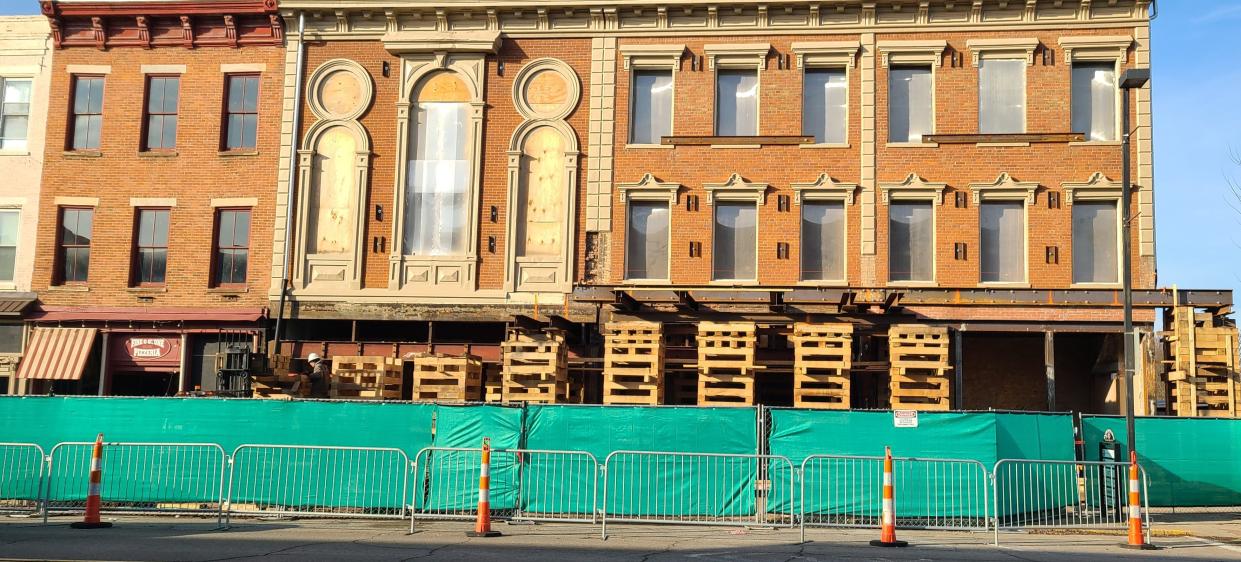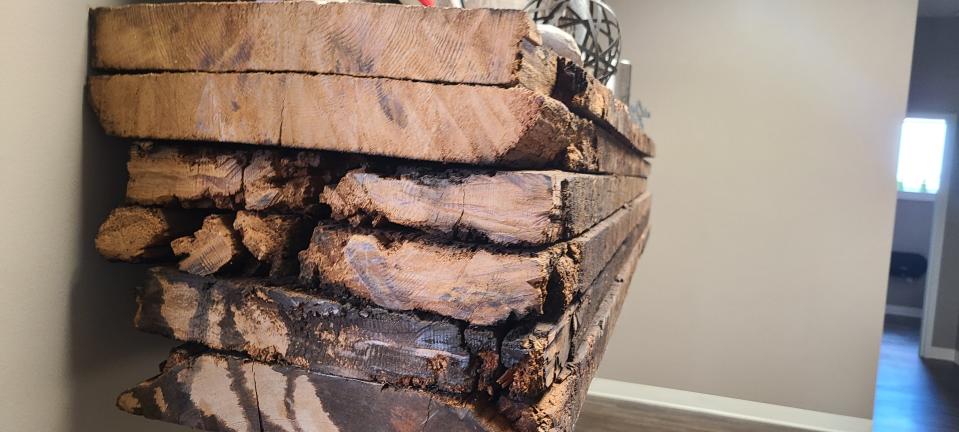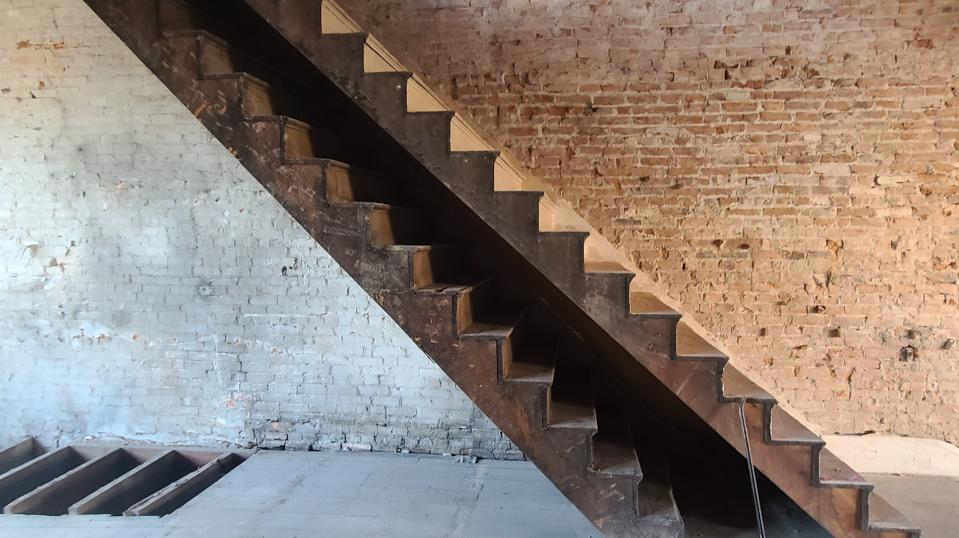Restoring History: Rebuilding Chillicothe's Downtown

CHILLICOTHE — A historic district brings charm and character to a town, giving visitors a glimpse into the rich history of an area.
Melody Young, Executive Director of the Ross-Chillicothe Convention and Visitors Bureau, said the downtown area is a major year-round attraction that many people from around the country come to visit. This renovation, while it results in a beautiful end product and great attraction, can be both time and cost-consuming.
In Chillicothe, the historic district is over 15 blocks large and located in the downtown area. The remaining historical buildings here help to highlight the days of Ohio's early development.
The historic district status helps to preserve the 19th-century feel that was once all over Ross County. The district encompasses the area starting at the intersection of North Walnut Street and West Water Street to the intersection of Water Street with North Mulberry Street to the intersection of Mulberry and East Fifth Street to the intersection of Fifth Street to South Walnut Street. The rules apply to all parcels with and without structures currently on them within the boundary.
When it comes to buildings in the historic downtown they must follow guidelines set by the Design Review Board. These rules include regulations on signage material and outside paint colors. The design review board rules say this is to preserve areas with "unique and valuable" structures.
Drew Musser, a member of the Design Review Board, said the board also exists to help owners find contractors who work with historic buildings and know what techniques to use to keep the integrity of the building.
Help through tax credits
There are also tax credits offered by the state to help those preserving history, though these come with rules as well. The tax credit offer incentives to owners and contractors who can rehab historic buildings to meet set requirements.
As of December 2021, only one project in Ross County had been approved and completed thanks to a preservation tax credit. The project was the renovation of the Carlisle Building.
Developer and builder Michael Chesler from the Chesler Group in Moreland Hills, said this building was one of the worst ones in his career as structurally it was in very bad shape. His firm solely focused on historical buildings so that gave him some confidence as well as lenders that he knew what he was doing.
Keeping the character of a historical building while making the structure safe is the "biggest challenge according to Chesler. He said it takes a lot of back and forth with the customer and with lenders who require certain rules to be met. Between consulting and building the renovation project took a little over three years to be completed and cost around $10 million in total.
Ben Daughters, owner of the Pour House at Machinery Hall, said these tax credits can be very competitive and hard for smaller businesses that don't have a dedicated staff to apply for let alone win. This is why many smaller business owners do not receive them.
Learn more about the Carlisle Building and the history of Downtown: The past, present and future of downtown Chillicothe

You never know what you will get
Daughters said when he purchased the Pour House building downtown he wanted to keep original features as much as he could. This includes keeping the original hardwood where possible and researching the building to see what it once looked like. In old street photos and registrations from the late 1800s they found that the boarded and bricked up windows had once been open and other details had been lost to time. Daughters and his contractor worked to bring these features of the old building back.
While the windows were a problem Daughters could see when he first bought the building he said many other problems could not be seen until cleanup began in 2016. These surprises, and the costs that come with them, were something Daughters said were hard to prepare for. These surprises include wooden support beams rotting due to water damage and a sagging third-story roof that required footers to be dug under the building to support.
Bringing an over 100-year-old building up to modern codes was also a process that had to be taken into consideration. Buildings in 1880 didn't need fire sprinklers but a commercial building in 2016 did. Staircases also had to be extended to meet safety codes set by the state. Daughters said all of these things were a part of the process that had to be completed, you couldn't ignore the problem as it would cause major damage in the future.
With unexpected problems comes a longer timeline. Daughters said the original renovation of the building was expected to take around six months, however, time was quickly added once structural damages were found. This pushed back the opening date for the restaurant, causing Daughters to lose out on projected income during that time.
Overall, the renovation of the building that the Pour House now occupies cost over $1 million to complete and took around 11 months to complete.

Bart Herrnstein has been involved in several different renovation projects in the downtown area including the buildings currently occupied by Paper City Coffee, The Mighty Children's Museum, 50 West Brewing and more. Throughout these projects, he has partnered with others in the community as well as with his wife, Aubrey. Both ways he has learned a lot about renovating old buildings to today's standards.
When it comes to selecting an old building to renovate location is one of the biggest factors for Herrnstein. Not only does he create locations for businesses on the first floor but many of the buildings he has worked on have rental properties, short-term and long-term, on the upper floors. A good location, like downtown, allows him to attract businesses and renters who want to enjoy the downtown area.
Other than location he said it can be hard to know what you are fully getting when you buy an old historic building. Some of the projects he has worked on have been boarded up for years, slowly falling apart. Herrnstein said while looking at a building can give you an idea of what it is like you never know fully what the structure of a building is until you start demolition.
"It's quite a leap of faith going into these buildings," said Herrnstein. "Until you go through the demolition process you don't know exactly what you're getting."
Keeping the history of a building is important to Herrnstein but he said it can be difficult in some buildings that have been left alone for so long. When making these decisions he and the contractors have to keep both preservation and future stability in mind.
A completed project can cost Herrnstein and others upwards of $1 million. He has learned over the years it is best to expect an increase in costs due to an unexpected problem. He has also found, for his projects, that total construction time can take anywhere from nine months to a year to complete depending on various factors that contractors face.
Even with the costs many business owners in Chillicothe seem to agree that the history of Downtown Chillicothe is something that can't be demolished, instead, it is something that needs to be embraced as it brings uniqueness to the area that can't be replicated.
Shelby Reeves is a reporter for the Chillicothe Gazette. You can email her at SReeves@gannett.com or follow her on Twitter @Shelby_Reeves_
This article originally appeared on Chillicothe Gazette: Restoring History: Rebuilding Chillicothe's Downtown

